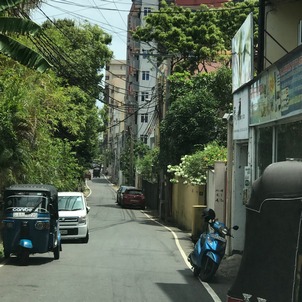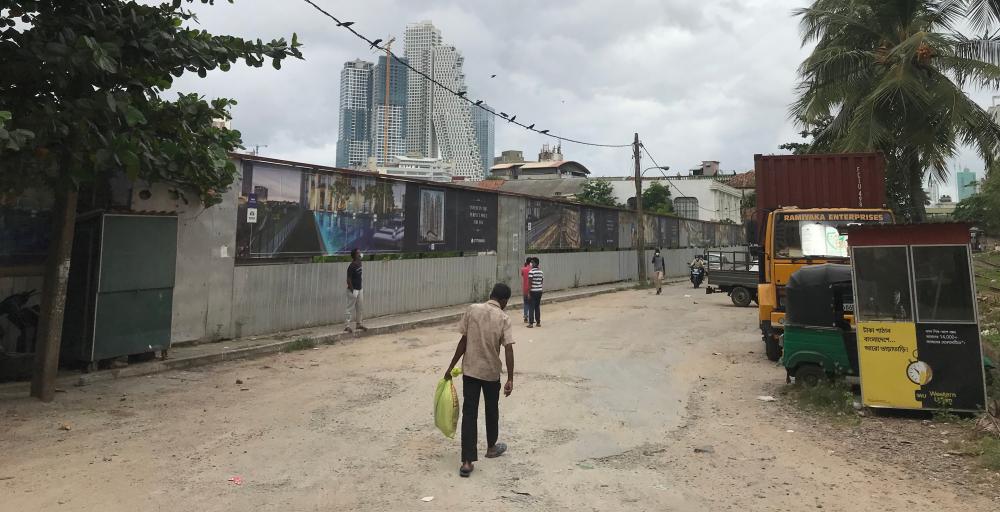Colombo: The Many Histories of a Global South City
Professor Sujit Sivasundaram
A Chinese-financed $15 billion dollar port city project is dramatically restructuring today’s city of Colombo, the capital of Sri Lanka. This is part of the Belt and Road Initiative. Yet, Colombo has a deeply layered imperial past: it was initially an Indian ocean settlement which attracted Muslim settlers, before it came under a succession of European empires, Portuguese (first trading post in 1518), Dutch (1658-1796) and British (1796-1948). I was very fortunate to be successful in the European Research Council’s Advanced Grant Scheme, which awarded me 2.5 million Euros to begin a collaborative project on the long history of Colombo from the ninth century to the present. This project will allow the drafting of a detailed historical case study with which to explore the historical pathways and present predicaments of the global South city.
- First, there will be a focus on the environmental foundations of the city. Colombo was multiply colonised as just noted, but it was also repeatedly engineered by each of these outside regimes. A lake was built by the Portuguese, canals by the Dutch, and breakwaters by the British. This was a space without a significant natural harbour. The wetland where Colombo arose had to be made stable for residence and trans-shipment. I’m interested in how these environmental projects proceeded and experienced resistance due to the aqueous ecological context. The recurrence of environmental problems in this city-space give us a fascinating perspective with which to mount a comparative exercise in how far and how limited imperial environmental manipulation tends to be. There were cycles of flooding; there were problems with the ocean’s wave heights; and there were impossible logics connected to epidemics travelling from ship to shore.
- Secondly, there will be a focus on social dynamics. Thinking of the post-colonial era, Sri Lanka is a heavily nationalised and ethnicised state, but what is interesting is how the city has resisted discourses of indigeneity, as it is inhabited by many minority communities with long narrations of origin. Near the city’s beginning, it was a centre for the globalisation of Islam. It was a key locale for merchant community formations in the early modern era. And in the late modern era, religious universalisms were preached and catalysed here. Partly for all of these reasons, the city has throughout much of its history been perceived by Sri Lankans as a non-Indigenous imposition on the coastline. It is a space beyond the national imaginary especially as its citizens vote in ways which are different to how citizens vote elsewhere in the island. I’m interested in tracking social formations with special attention to minoritization and inequality as also the formation of distinct senses of the neighbourhood, by way of class or ethnicity or gender, in various parts of the city, for different urban dwellers.
-

Third, for anyone who has taken any of the undergraduate papers I teach at the faculty of History, it will be no surprise that there will be attention to culture. Given its location at the centre of the Indian ocean’s routes of trade, migration and religious exchange, Colombo generated a vast media archive of images, writing of various kinds; and later, film, fiction as well as non-fiction.This excess of cultural production was a way of navigating the demands of life and otherness. It was also a way of navigating the past and retelling it as a way of coping with the present. Cultural artefacts, including the city itself as a collection of material artefacts, were and continue to be sites to document origin, residence and experience. Recurrent motifs – the street scene or the clustering of coconut trees on the city’s alleyways – appeared in the city’s visual archive. Buildings in the city are amalgamations of style and construction. Walks through the city in the pandemic motivated this sense of it for me: it is a distinctive feature of urban life that houses and buildings here have been added to over centuries, floor by floor. In keeping with present practice in cultural history, the project will also interrogate contemporary artworks in the city and include residencies in Cambridge for a few Sri Lankan artists of the city, who will respond to the research of the project and in turn locate it within their own archives.
- Fourth and finally, of course there will be a politics strand to this project; for history in the island is deeply political. The professional historian has no monopoly over the telling of the past and rightly so. This project sees environmental and social contexts as generative of culture and politics. Political ideas do not have a life of their own. They come to be through the intersection of material contexts, human and natural, and through engagement between very many communities and a variety of media. The politics of this city here runs from early modern modes of resistance to coercive labour to organisations of politics in the city, around new political ideologies and parties. It takes in the dramatic street protests in Sri Lanka in 2022, at the end of the pandemic and in the midst of economic meltdown but places them within the long later-twentieth century history of conflict on the island. But in addition to protests, politics here encompasses urban violence of a variety of kinds. Sri Lanka’s long-running twentieth century civil war had an impact on Colombo, most notably in 1983, when an anti-Tamil pogrom ripped through the city, displacing about half of the Tamil population. This oft- cited turning point in the city’s history needs in turn to be located in a sequence of urban conflicts, through the twentieth century, for instance in 1958 and 1977.
In this way, from empire to war, from Islamic globalisation to Buddhist nationalism, Colombo for me is a mirror to so many of the dilemmas facing city dwellers in the global South. By working together with a team, including Sri Lankan researchers, I hope also to make Cambridge a centre for an unique collaboration across contexts of academic privilege and precarity. The project also involves a digital humanities element, allowing the team to present this research online and in graphic form to audiences spread globally, especially in the wide Sri Lankan diaspora.

All photos by Sujit Sivasundaram
